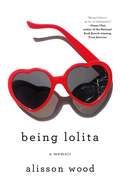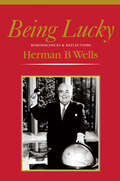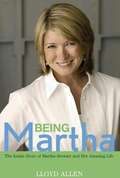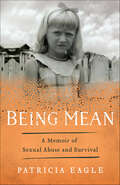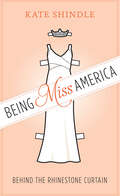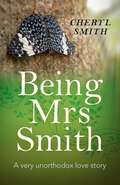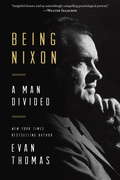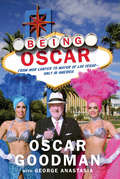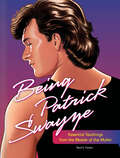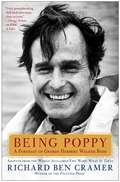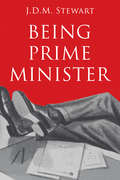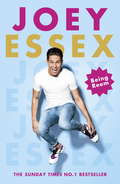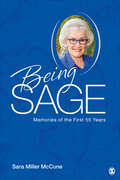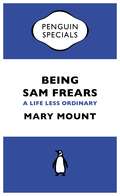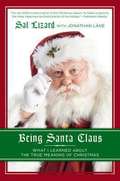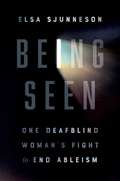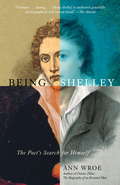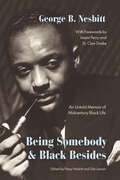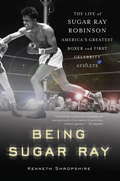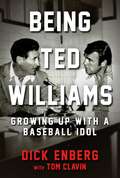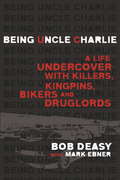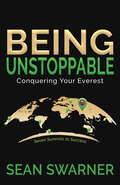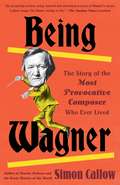- Table View
- List View
Being Lolita: A Memoir
by Alisson WoodAS FEATURED IN THE HULU DOCUMENTARY KEEP THIS BETWEEN USA dark relationship evolves between a high schooler and her English teacher in this breathtakingly powerful memoir about a young woman who must learn to rewrite her own story.“Have you ever read Lolita?”So begins seventeen-year-old Alisson’s metamorphosis from student to lover and then victim. A lonely and vulnerable high school senior, Alisson finds solace only in her writing—and in a young, charismatic English teacher, Mr. North. Mr. North gives Alisson a copy of Lolita to read, telling her it is a beautiful story about love. The book soon becomes the backdrop to a connection that blooms from a simple crush into a devastating and dangerous bond. But as Mr. North’s hold on her tightens, Alisson is forced to evaluate how much of their narrative is actually a disturbing fiction.In the wake of what becomes a deeply abusive relationship, Alisson is faced again and again with the story of her past, from rereading Lolita in college to working with teenage girls to becoming a professor of creative writing. It is only with that distance and perspective that she understands the ultimate power language has had on her—and how to harness that power to tell her own true story.Being Lolita is a stunning coming-of-age memoir that shines a bright light on our shifting perceptions of consent, grooming, vulnerability, and power. This is the story of what happens when a young woman realizes her entire narrative must be rewritten—and then takes back the pen to rewrite it.
Being Lucky: Reminiscences And Reflections
by Herman B WellsIn this absorbing autobiography, Herman B Wells, the legendary former president of Indiana University, recalls his small-town boyhood, the strong influence of his parents, his pioneering work with Indiana banks during the Great Depression, and his connection with IU, which began as a student when the still provincial school had fewer than 3,000 students. At the end of his 25-year tenure as president, IU was a university with an international reputation and a student body that would soon exceed 30,000. Both lighthearted and serious, Wells's reflections describe in welcome detail how he approached the job, his observations on administration, his thoughts on academic freedom and tenure, his approach to student and alumni relations, and his views on the role of the university as a cultural center. Being Lucky is a nourishing brew of the memories, advice, wit, and wisdom of a remarkable man.
Being Martha: The Inside Story Of Martha Stewart And Her Amazing Life
by Lloyd AllenBeing Martha is a personal-at times a searingly personal-account of Martha's life from the inside, by a friend. It's fascinating-very anecdotal and very emotional. It won't be like anything else you've ever read about her. -John Small, editor of SaveMartha. com From Being Martha ""Martha has taught people to do many things and not in the way an ordinary teacher would, but in her own particular way. She taught people about the good things in life-the simple things. "" -Martha Kostyra, Martha's mother ""My mother and I have always been close. We are not closer since the trial and prison-we've always been close. . . . Don't we all want a better life? No matter what they say about my mom, all she ever does is teach the world good things that will help them in life. So what if she shows you the perfect way to do it? Would you want your professor at school to do anything less in any other subject? Her fans know what she's all about. "" -Alexis Stewart, Martha's daughter ""It was all about going and finding a piece of land and living off of it, learning how to get back to nature. Listening to banjos, listening to folk music, discovering Leadbelly and the Mamas and the Papas. We used to have the greatest evenings with a bunch of hospitable people. Martha would make pies and other things for the occasions. "" -George Christiansen, Martha's brother, about the early years ""Martha raised the bar for me and made me think big. . . . We have an alley cat, Ricky, that lives next door at the deli, and he roams in and out of the neighborhood. Ricky has no tail, he's dirty, and he acts like a dog. One morning during the trial, Martha was in the salon wearing a three-thousand-dollar Jil Sander suit. She was sitting on one of the chairs in the back. Ricky came in and jumped on top of her and was all over her, licking her neck and putting paw marks all over her. Martha said, 'Oh my God, this cat is so dirty, this is such a dirty little cat!' But she let him crawl all over her. She just dusted the hair and dirt off. She really has a lot of kindness in her. "" -Eva Scrivo, Martha's friend and hairdresser
Being Mean: A Memoir of Sexual Abuse and Survival
by Patricia EagleBeing Mean is about learning how to acknowledge and live with incomprehensible experiences in the healthiest ways possible. Told in vignettes relative to markers of age and experience, Patricia Eagle reveals the heartbreak and destruction of sexual abuse, from age four to thirteen, by her father. Eagle uses dissociation and numbing in response to his abusive behavior, her mother’s complacency, and as a way to block her own sense of self. How does a child come to know what is safe or unsafe, right or wrong, normal or abnormal? How does a young woman learn the difference between real love and a desire for sexual pleasure stimulated by abusive childhood sexual experiences? Careening through life, Eagle wonders how to trust others and, most importantly, herself. As a mature woman struggling to understand and live with her past, she remains earnest in her pursuit of clarity, compassion, and trust.
Being Miss America: Behind the Rhinestone Curtain (Discovering America)
by Kate Shindle&“[Shindler] tells the story of her year wearing the crown while offering an incisive history and analysis of an always-controversial beauty contest.&” —Kirkus Reviews In Being Miss America, Kate Shindle interweaves an engrossing, witty memoir of her year as Miss America 1998 with a fascinating history of the pageant. She explores what it means to take on the mantle of America&’s &“ideal,&” especially considering the evolution of the American female identity since the pageant&’s inception. Shindle profiles winners and organization leaders and recounts important moments in the pageant&’s story, with a special focus on Miss America&’s iconoclasts, including Bess Myerson (1945), the only Jewish Miss America; Yolande Betbeze (1951), who crusaded against the pageant&’s pinup image; and Kaye Lani Rae Rafko (1987), a working-class woman from Michigan who wanted to merge her famous title with her work as an oncology nurse. Shindle&’s own account of her work as an AIDS activist—and finding ways to circumvent the &“gown and crown&” stereotypes of Miss America in order to talk honestly with high school students about safer sex—illuminates both the challenges and the opportunities that keep young women competing to become Miss America. &“Kate Shindle&’s sharply observed, smart, and heartbreaking take on Miss America will be embraced by pageant super fans and should be required reading for everyone who&’s thought about what it takes to be America&’s ideal.&” —Jennifer Weiner, New York Times-bestselling author &“This memoir offers a captivating cultural history of the last 100 years in America through the lens of the Miss America Pageant and its white-knuckled struggle to remain relevant.&” —Library Journal
Being Mrs Smith: A Very Unorthodox Love Story
by Cheryl SmithBeing Mrs Smith always did mean embracing the unexpected, but even Mrs Smith didn&’t expect an Amazonian adventure. When the horror of cancer touched the Smiths, they embarked on a journey to ultimate healing and peace. This is the story of their journey. Faced with heart-rending decisions, they accept unmissable opportunities with a courageousness they never knew they had. In the deepest jungle regions, they encounter charlatans and shamans and learn to distinguish between them. Surrendering to the path that is theirs to take, they embrace ancient teachings and strange medicines, and grasp the opportunity to dance with the spirits of sacred plants, including that of Ayahuasca. Far from home, the Smiths learn the true value of family and community as they place their trust in the wisdom of the indigenous elders, in themselves and in each other, and ultimately in Nature herself. Here is a rare story of healing that tells of the melding of souls as Mr and Mrs Smith walk each other home.
Being Nixon: A Man Divided
by Evan ThomasEvan Thomas delivers the best single-volume biography of Richard Nixon to date, a radical, unique portrait of a complicated figure who was both determinedly optimistic and tragically flawed. The New York Times bestselling author of Ike's Bluff and Sea of Thunder, Thomas brings new life to one of American history's most infamous, paradoxical, and enigmatic politicians, dispensing with myths to achieve an intimate and evenhanded look at the actual man. What drove a painfully shy outcast in elite Washington society--a man so self-conscious he refused to make eye contact during meetings--to pursue power and public office? How did a president so attuned to the American political id that he won reelection in a historic landslide lack the self-awareness to recognize the gaping character flaws that would drive him from office and forever taint his legacy? In Being Nixon, Evan Thomas peels away the layers of the complex, confounding figure who became America's thirty-seventh president. The son of devout Quakers, Richard Nixon (not unlike his rival John F. Kennedy) grew up in the shadow of an older, favored brother and thrived on conflict and opposition. Through high school and college, in the navy and in politics, he was constantly leading crusades and fighting off enemies real and imagined. As maudlin as he was Machiavellian, Nixon possessed the plainspoken eloquence to reduce American television audiences to tears with his career-saving "Checkers" speech; meanwhile, his darker half hatched schemes designed to take down his political foes, earning him the notorious nickname "Tricky Dick." Drawing on a wide range of historical accounts, Thomas reveals the contradictions of a leader whose vision and foresight led him to achieve détente with the Soviet Union and reestablish relations with communist China, but whose underhanded political tactics tainted his reputation long before the Watergate scandal. One of the principal architects of the modern Republican Party and its "silent majority" of disaffected whites and conservative ex-Dixiecrats, Nixon was also deemed a liberal in some quarters for his efforts to desegregate Southern schools, create the Environmental Protection Agency, and end the draft. A deeply insightful character study as well as a brilliant political biography, Being Nixon offers a surprising look at a man capable of great bravery and extraordinary deviousness--a balanced portrait of a president too often reduced to caricature.
Being Oscar: From Mob Lawyer to Mayor of Las Vegas
by Oscar GoodmanIn Being Oscar,one of America's most celebrated criminal defense attorneys recounts the stories and cases of his epic life. The Mafia's go-to defender, he has tried an estimated 300 criminal cases, and won most of them. His roster of clients reads like a history of organized crime: Meyer Lansky, Nicky Scarfo, and "Lefty" Rosenthal, as well as Mike Tyson and boxing promoter Don King, along with a midget, a dentist, and a federal judge.After thirty-five years as a defender, he ran for mayor of Las Vegas, and America's greatest Mob lawyer became the mayor of its sexiest city. He was so popular his image appeared on the $5, $25, and $100 chips. While mayor of Vegas, he starred on the screen in Rush Hour 2 and CSI. He is as large a character in the history of organized crime as any of his clients and as legendary a figure in the history of Las Vegas as the entrepreneurs (his friends and clients) who built the city. This is his astonishing story--the truth, the whole truth, and nothing but the truth.
Being Patrick Swayze: Essential Teachings from the Master of the Mullet
by Neal E. FischerA humorous illustrated guide to the essential teachings of 80s and 90s pop culture icon and legacy, Patrick Swayze, with movie quotes, trivia, essays, exercises, games, activities, and quizzes.Divided into five elements—Tender Strength (versatility in performances and balance of his unique skill set), Pure Adrenaline (his physicality and death-defying stunt work), Hungry Eyes (effortless sensuality in life and on-screen), Peaceful Warrior (the philosophy behind his characters and their actions) and The Mullet (legacy of the man, the myth, the mullet)—this book is designed to cultivate your mind, body, and soul.Through the use of movie quotes and cinematic wisdom, physical (Sweatin' Like Swayze; Swayze Sutra) and mental exercises, games, activities (Swayze Pairing Guide), and quizzes, this journey will unlock your Swayze swagger, leading to a more harmonious life. When completed, you'll be impressing friends and strangers alike with your endless knowledge and admiration for one of Hollywood's most likable and underappreciated stars.For half a century Patrick Swayze has remained in our hearts, on our minds, and the sole reason that any trip to a vacation resort must first start at the dance hall . . . just in case they employ their own Johnny Castle. Embrace these teachings and achieve newfound clarity in all aspects of your life.BELOVED ICON: Patrick Swayze will forever be an icon, known for his legendary roles in classic and cult favorite movies like Dirty Dancing, Ghost, Point Break, Road House, and more.THE PERFECT GIFT: Chock full of trivia, behind-the-scenes anecdotes, short essays, and fun interactive content like quizzes, a pairing guide, a Swayze workout, and more, this is the perfect gift for Patrick Swayze fans and anyone who grew up in the 80s and 90s.FUNNY AND INFORMATIVE: Content is humorous, yet still contains biographical information, fun facts about Swayze and his philosophies, and tons of movie trivia.EXPERT AUTHOR: Written by an award-winning screenwriter and podcaster, and die-hard Patrick Swayze fan.Perfect for:• Patrick Swayze fans• Readers with '80s and '90s nostalgia• Hollywood pop culture nerds and film buffs• Fans of Dirty Dancing, Point Break, Road House, Ghost, and Red Dawn
Being Poppy: A Portrait of George Herbert Walker Bush
by Richard Ben CramerGeorge Herbert Walker Bush, the forty-first president of the United States and the patriarch of America’s most powerful political dynasty, never wrote a memoir. But bestselling author and Pulitzer Prize–winning reporter Richard Ben Cramer took the full measure of President Bush in his thousand-page epic, What It Takes—one of the most influential and respected works of journalism and biography of the modern era. Drawn from those pages and edited by Cramer shortly before he died, this book traces how seminal moments in President Bush’s life formed his character and foretold his legacy. The result is a loving portrait that remains as fresh, relevant, and insightful as the day it was first published.
Being Prime Minister
by J.D.M. StewartBehind the politics, discover the lives of Canada's leaders. “What a life it is to be prime minister!” — John Diefenbaker Canada has had twenty-three prime ministers, all with views and policies that have differed as widely as the ages in which they lived. But what were they like as people? Being Prime Minister takes you behind the scenes to tell the story of Canada’s leaders and the job they do as it has never been told before. From John A. Macdonald to Justin Trudeau, readers get a glimpse of the prime ministers as they travelled, dealt with invasions of privacy, met with celebrities, and managed the stress of the nation’s top job. Humorous and hard working, vain and vulnerable, Canada leaders are revealed as they truly were.
Being Reem
by Joey EssexJoey's bestselling book updated with an exclusive new chapter! The nation's favourite Essex boy tells his rollercoaster story so far. Trendsetter, male grooming icon and all-round good guy, this is the world according to the one and only Joey Essex.Spreading joy wherever he goes, Joey became an instant favourite after joining the cast of The Only Way Is Essex in 2011. Renowned for his brilliant observations, distinctive style and immaculate hair, his unforgettable appearance on I'm A Celebrity... Get Me Out Of Here! has confirmed that this Brentwood boy is a national treasure in the making.But life for Joey hasn't always been so straightforward. When he was just 10-years-old, his mother, Tina, committed suicide after battling with depression, a fact that Joey didn't find out until many years later. For the first time Joey opens up about life before fame and the events which have led him to where he is today. Whether you're a salty potato or a pair of Capri Suns Joey teaches us to take everything as it comes and shares his own unique view of the world around him. Hilarious, touching and always surprising, Being Reem is the crazy story of Joey Essex's journey to becoming one of our most loveable stars.
Being Reem
by Joey EssexTrendsetter, male grooming icon and all-round good guy, this is the world according to the one and only Joey Essex. Spreading joy wherever he goes, Joey became an instant favourite after joining the cast of The Only Way Is Essex in 2011. Renowned for his brilliant observations, distinctive style and immaculate hair, his unforgettable appearance on I'm A Celebrity... Get Me Out Of Here! has confirmed that this Brentwood boy is a national treasure in the making. But life for Joey hasn't always been so straightforward. When he was just 10-years-old, his mother, Tina, committed suicide after battling with depression, a fact that Joey didn't find out until many years later. For the first time Joey opens up about life before fame and the events which have led him to where he is today. Whether you're a salty potato or a pair of Capri Suns Joey teaches us to take everything as it comes and shares his own unique view of the world around him. Hilarious, touching and always surprising, Being Reem is the crazy story of Joey Essex's journey to becoming one of our most loveable stars.
Being SAGE: 55th Anniversary Edition
by SAGE PublishingOver drinks with her favorite professor and her future husband, a 25-year-old Sara Miller founded one of the most influential academic publishing houses on the planet. This career-spanning autobiography follows Sara Miller McCune and the company that emerged from that cocktail hour, SAGE Publishing. Read along as over 55 years SAGE grows from publishing a single journal promoted by direct mail (from a list provided by Daniel Patrick Moynihan) into a globe-spanning and proudly independent company with a core belief that engaged scholarship lies at the heart of any healthy society.While the book is an excellent source for those interested in publishing, education (especially the rise of social science in the post-war academy), and entrepreneurship, perhaps its most powerful impact is as an inspiring tale for young women anxious to start their own business and chart an independent course in life.
Being Sam Frears: A Life Less Ordinary (Penguin Specials)
by Mary MountThis is Sam Frears' story.This is also the story of an actor, a rock-climber and a man born with an extremely rare genetic disorder only affecting Ashkenazi Jews. Sam was supposed to live to the age of 5. In February, he celebrated his 40th birthday.Challenged by blindness and a body under great stress, Sam Frears is trying to live an ordinary life under extraordinary circumstances His struggles and triumphs offer an illuminating look at the differences - and similarities - that make us human. For those who enjoyed My Left Foot and Stuart: A Life Backwards, this Penguin Special offers a fresh look at what it's like to be Sam.
Being Santa Claus: What I Learned about the True Meaning of Christmas
by Jonathan Lane Sal LizardA veteran Santa reveals heartwarming true stories and lessons from his twenty-year career spreading Christmas magic. With the holiday shopping season beginning earlier each year, more than ever. Americans are struggling to remember the true meaning of Christmas. And who better to deliver the gift of Christmas inspiration than a man who has spent the last two decades playing Santa? Sal Lizard was in his twenties when his beard and hair turned completely white. Today he appears everywhere from malls and parades to schools and hospitals. And— from his custom-made red velvet suits to the mistletoe that hangs from the rearview mirror in his Santa-mobile—he is Santa Claus three hundred and sixty-five days a year. In Being Santa Claus Sal reflects on his experiences with both children and adults including: Christmas magic is all around us: We don’t always see it, but it is there, shaping and enriching our lives. Sometimes you need to go that extra mile:Santa Claus is the one person who can’t even use a blizzard as an excuse not to honor his commitments, and Sal teaches adults the importance of always showing up for our children. Even a small child can make a big difference: Sal has met some impressive children over the years, and he’s learned that you don’t need to be a grown-up to make an impact on the world around you. In Being Santa Claus Sal shares these lessons, along with often heartwarming, occasionally heartbreaking, and sometimes downright hysterical stories from his twenty-year career as Santa. .
Being Seen: One Deafblind Woman's Fight to End Ableism
by Elsa SjunnesonA deafblind writer and professor explores how the misrepresentation of disability in books, movies, and TV harms both the disabled community and everyone else.As a deafblind woman with partial vision in one eye and bilateral hearing aids, Elsa Sjunneson lives at the crossroads of blindness and sight, hearing and deafness—much to the confusion of the world around her. While she cannot see well enough to operate without a guide dog or cane, she can see enough to know when someone is reacting to the visible signs of her blindness and can hear when they&’re whispering behind her back. And she certainly knows how wrong our one-size-fits-all definitions of disability can be. As a media studies professor, she&’s also seen the full range of blind and deaf portrayals on film, and here she deconstructs their impact, following common tropes through horror, romance, and everything in between. Part memoir, part cultural criticism, part history of the deafblind experience, Being Seen explores how our cultural concept of disability is more myth than fact, and the damage it does to us all.
Being Shelley: The Poet's Search for Himself
by Ann WroeFrom Ann Wroe, a biographer of the first rank, comes a startlingly original look at one of the greatest poets in the Western tradition. Being Shelley aims to turn the poet's life inside out: rather than tracing the external events of his life, she tracks the inner journey of a spirit struggling to create. In her quest to understand the radically unconventional Shelley, Wroe pursues the questions that consumed the poet himself. Shelley sought to free and empower the entire human race; his revolution was meant to shatter illusions, shock men and women with new visions, find true love and liberty--and take everyone with him. Now, for the first time, this passionate quest is put at the center of his life. The result is a Shelley who has never been seen in biography before.
Being Somebody and Black Besides: An Untold Memoir of Midcentury Black Life
by George B. NesbittAn immersive multigenerational memoir that recounts the hopes, injustices, and triumphs of a Black family fighting for access to the American dream in the twentieth century. The late Chicagoan George Nesbitt could perhaps best be described as an ordinary man with an extraordinary gift for storytelling. In his newly uncovered memoir—written fifty years ago, yet never published—he chronicles in vivid and captivating detail the story of how his upwardly mobile Midwestern Black family lived through the tumultuous twentieth century. Spanning three generations, Nesbitt’s tale starts in 1906 with the Great Migration and ends with the Freedom Struggle in the 1960s. He describes his parents’ journey out of the South, his struggle against racist military authorities in World War II, the promise and peril of Cold War America, the educational and professional accomplishments he strove for and achieved, the lost faith in integration, and, despite every hardship, the unwavering commitment by three generations of Black Americans to fight for a better world. Through all of it—with his sharp insights, nuance, and often humor—we see a family striving to lift themselves up in a country that is working to hold them down. Nesbitt’s memoir includes two insightful forewords: one by John Gibbs St. Clair Drake (1911–90), a pioneer in the study of African American life, the other a contemporary rumination by noted Black studies scholar Imani Perry. A rare first-person, long-form narrative about Black life in the twentieth century, Being Somebody and Black Besides is a remarkable literary-historical time capsule that will delight modern readers.
Being Somebody and Black Besides: An Untold Memoir of Midcentury Black Life
by George B. NesbittAn immersive multigenerational memoir that recounts the hopes, injustices, and triumphs of a Black family fighting for access to the American dream in the twentieth century. The late Chicagoan George Nesbitt could perhaps best be described as an ordinary man with an extraordinary gift for storytelling. In his newly uncovered memoir—written fifty years ago, yet never published—he chronicles in vivid and captivating detail the story of how his upwardly mobile Midwestern Black family lived through the tumultuous twentieth century. Spanning three generations, Nesbitt’s tale starts in 1906 with the Great Migration and ends with the Freedom Struggle in the 1960s. He describes his parents’ journey out of the South, his struggle against racist military authorities in World War II, the promise and peril of Cold War America, the educational and professional accomplishments he strove for and achieved, the lost faith in integration, and, despite every hardship, the unwavering commitment by three generations of Black Americans to fight for a better world. Through all of it—with his sharp insights, nuance, and often humor—we see a family striving to lift themselves up in a country that is working to hold them down. Nesbitt’s memoir includes two insightful forewords: one by John Gibbs St. Clair Drake (1911–90), a pioneer in the study of African American life, the other a contemporary rumination by noted Black studies scholar Imani Perry. A rare first-person, long-form narrative about Black life in the twentieth century, Being Somebody and Black Besides is a remarkable literary-historical time capsule that will delight modern readers.
Being Sugar Ray: The Life of Sugar Ray Robinson, America's Greatest Boxer and the First Celebrity Athlete
by Kenneth ShropshireMuhammad Ali memorably referred to Sugar Ray Robinson as "the king, the master, my idol,” and rarely a fight fan has chosen to argue too much with those words. With a career spanning three decades, multiple championships, over two hundred fights (without once taking a 10-count), and more victories than Joe Louis and Ali combined it was no surprise when RING magazine named Robinson "pound for pound, the best boxer of all time. ” In Being Sugar Ray, acclaimed scholar Kenneth Shropshire contends that Sugar Ray Robinson’s influence extends far beyond the ring. It was Robinson who introduced America to the athlete as entrepreneur and celebrity. From his business empire to his prized flamingo pink Cadillac, described as the Hope Diamond of Harlem, Sugar Ray was the trailblazer whom every athlete since has been trying, consciously or otherwise, to emulate.
Being Ted Williams: Growing Up with a Baseball Idol
by Tom Clavin Dick EnbergAugust 30, 2018 marks the 100th birthday of the former Boston Red Sox outfielder and baseball legend. In Being Ted Williams, esteemed sportscaster Dick Enberg offers a series of personal anecdotes that loosely follow Ted's life from his childhood in San Diego, to his fun teenage years playing in the Pacific Coast League, his glorious yet frustrating Red Sox career, his heroic actions as a fighter pilot in two wars (as John Glenn's favorite wing-man), and his post-career years leading to his heart-rending appearance at age eighty at the 1999 All-Star Game. Though other books have recounted Williams's career, none have done so through the eyes of someone like Enberg, who followed Ted's career as just a young boy, trying to emulate his classic swing, then as a broadcaster, and finally as a friend, when the two men could enjoy numerous get-togethers until Ted's passing in 2002. Enberg also weaves in personal stories and commentary on what it means to be a hero from other legendary sports figures, such as Bobby Knight, Vin Scully, Bill Walton, and many more. Being Ted Williams makes the perfect gift for the baseball fan looking for a unique perspective on one of the sport's greatest legends through the lens of one of the best broadcasters in the game's history.
Being Uncle Charlie
by Bob DeasyBeing Uncle Charlie is the intense, intimate and graphic story of one Canadian undercover cop who spent two decades infiltrating organized crime. From Russian and Italian mafias to notorious biker gangs, Bob Deasy gained access to and the acceptance of criminals who most cops in any country would never encounter or arrest, let alone befriend.Bob Deasy had an illustrious twenty-three year career with the Ontario Provincial Police. Using little more than his quick wits, natural confidence and a deft mental equilibrium that allowed him to stay three chess moves ahead of his quarry, Deasy was the secret weapon behind some of the signature crime busts in Canadian history. Infiltrating the Outlaws Motorcycle Club and the Russian and Italian mobs, he also single-handedly set up international import-export businesses, faked contract hit jobs and executed one of the largest drug buys in OPP history. He also perfected the now controversial "Mr. Big" technique of posing as a crime kingpin to solicit unwitting confessions from suspects in long-dormant cold murder cases--a tactic he defends as he practised it, and with which he enjoyed a 100% success rate.Being Uncle Charlie is a nail-biting ride--sometimes comic, always entertaining--that reads like a one-man history of modern crime, told through the ground-level, insider's perspective of a cop who was able to blend in with the unsavoury, the desperate and the diabolical.
Being Unstoppable: Conquering Your Everest
by Sean SwarnerBeing Unstoppable is the first book in the 7 Summits to Success series. It is a story of one man’s journey to accomplishing what was once thought impossible. Sean Swarner overcame two different cancers to make his dream of climbing Mt. Everest (with one lung), the highest mountain in the world, a reality. In addition to sharing his story with the world, Sean shares the guiding principles that made his own dreams a reality. Being Unstoppable begins with Sean’s story of survival, adventure, and cliff-hanging suspense. It concludes with a section containing simple, practical steps anyone can use to fulfill their own dreams and goals. Sean teaches how he managed to make the impossible possible and how to incorporate those same simple but powerful steps into climbing one's own Everest.
Being Wagner: The Story of the Most Provocative Composer Who Ever Lived
by Simon CallowSimon Callow, the celebrated author of Orson Welles, delivers a dazzling, swift, and accessible biography of the musical titan Richard Wagner and his profoundly problematic legacy--a fresh take for seasoned acolytes and the perfect introduction for new fans.Richard Wagner's music dramas have never been more popular or more divisive. His ten masterpieces, created against the backdrop of a continent in severe political and cultural upheaval, constitute an unmatched body of work. A man who spent most of his life in abject poverty, inspiring both critical derision and hysterical hero-worship, Wagner was a walking contradiction: belligerent, flirtatious, disciplined, capricious, demanding, visionary, and poisonously anti-Semitic. Acclaimed biographer Simon Callow evokes the intellectual and artistic climate in which Wagner lived and takes us through his most iconic works, from his pivotal successes in The Flying Dutchman and Lohengrin, to the musical paradigm shift contained in Tristan and Isolde, to the apogee of his achievements in The Ring of the Nibelung and Parsifal, which debuted at Bayreuth shortly before his death. Being Wagner brings to life this towering figure, creator of the most sublime and most controversial body of work ever known.
